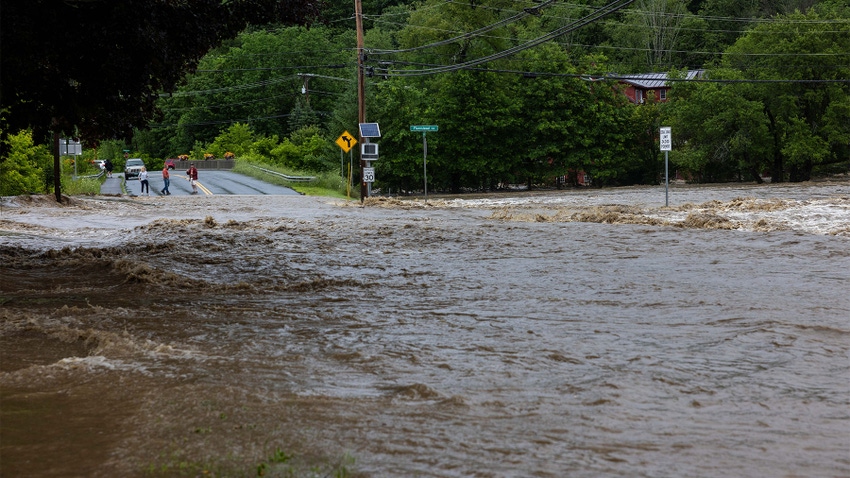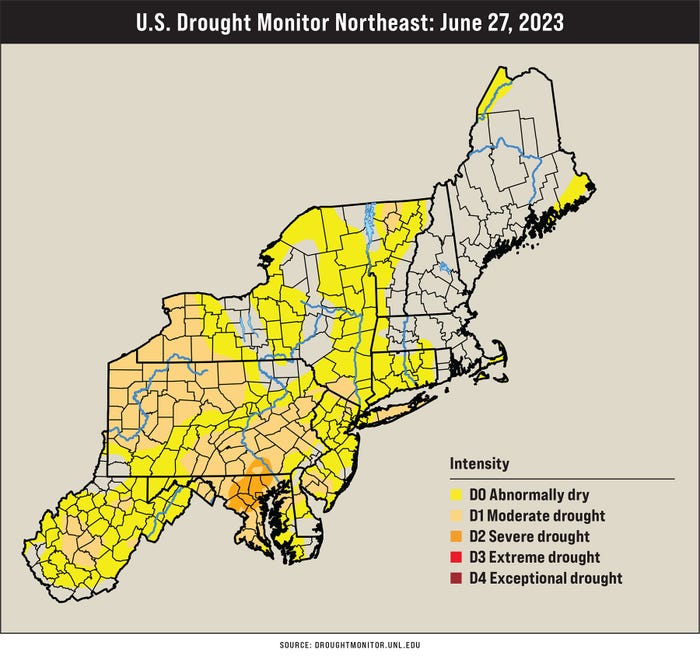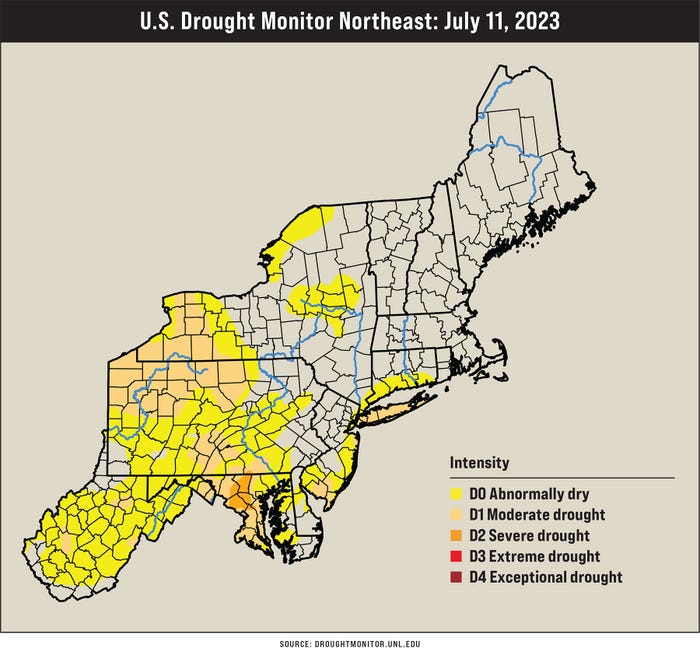
This has already been a season to remember, and harvest is still a few months away.
Mother Nature has thrown curveball after curveball at us this season.
May was one of the driest springs I can remember, and data backs that up. According to the National Weather Service, it was the driest May ever in Harrisburg, Pa.; Wilmington, Del.; and Binghamton, N.Y.
I remember walking a wheat field in Berks County in early June and talking to a grower about his double-crop soybean plans. He said, “It depends on the weather.” I wonder if he decided to plant soybeans or not. I plan on checking in.
Then, in late May, an unusual freeze devastated orchards and vineyards in New York. Some vineyards lost more than half their wine grapes. Cornell University estimated that up to 15% of the state’s apple crop was lost, and that areas of the Hudson Valley, just north of New York City, lost between 30% and 35% of apples.
By late June, the dry weather forced government officials to act. For example, on June 15, Pennsylvania issued an official “drought watch” calling for voluntary water conservation.
Check out this map to see how dry the region got by late June:

This was shaping up to be a bad drought year.
Then, the heavens opened. Late June brought storms and much-needed rain to most of the region. Last week’s storms plowed through my area of Lebanon County, and we got 2-3 inches of rain in just an hour or two.
In neighboring Berks County, I saw reports of 5 to 6 inches of rain in a span of just a few hours. That much rain, while welcome, is too much in a short period of time. Reports of flash flooding, and the damage caused by it, were everywhere.
But that was nothing compared to the devastating flooding event in Vermont. The same storm system that gave my area some much-needed rain caused rivers to overflow and dams to breach in the Green Mountain State. Look at these rainfall totals from the National Weather Service:
Newport, Vt.: 11.04 inches
Stowe, Vt.: 11.62 inches
Shrewsbury, Vt.: 15.92 inches
Island Pond, Vt.: 16.64 inches
According to the National Weather Service, 1 inch of rain equals roughly 13 inches of snow. So, if you live in Island Pond and this event would have happened in winter, you would have gotten 208 inches of snow. That’s a lot of water!

DRY EMERGENCE: Corn emerged on this farm just outside Lebanon, Pa., but by June the ground was parched. Nearby Harrisburg, Pa., experienced its driest May in history.
Whatever your views on climate change, it’s time to acknowledge that these weather patterns are not normal. I mean, we meant from potentially a terrible drought to a record-breaking flooding in a span of a few weeks. Remember California earlier this winter? Their megadrought was finally broken, but we’re talking years, or even two years’ worth of rain falling in a span of days or weeks.
I don’t care how great your soil management practices are. I just don’t see how farmers can manage for something like this, let alone plan for it.
The good news is that a bad, widespread drought has likely been avoided, although some places still need some rain.
Check out the most recent U.S. Drought Monitor map:

The bad news: We still have a lot of growing season left, and plenty of chances for Mother Nature to throw some more curveballs at us.
Every year on the farm is a gamble, especially when growing crops. But a little bit of relief from this insane weather would be nice, welcome reprieve.
About the Author(s)
You May Also Like






